Abelmoshus
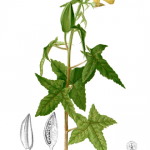 Abelmoschus is a genus of about fifteen species of flowering plants in the mallow family, Malvaceae, native to tropical Africa, Asia and northern Australia. It was formerly included within Hibiscus, but is now classified as a distinct genus. The genus comprises annual and perennial herbaceous plants, growing to 2 m tall.
Abelmoschus is a genus of about fifteen species of flowering plants in the mallow family, Malvaceae, native to tropical Africa, Asia and northern Australia. It was formerly included within Hibiscus, but is now classified as a distinct genus. The genus comprises annual and perennial herbaceous plants, growing to 2 m tall.
Abies nordmanniana
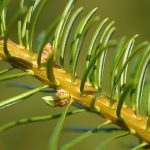 Abies nordmanniana, the Nordmann fir or Caucasian fir, is a fir indigenous to the mountains south and east of the Black Sea, in Turkey, Georgia and the Russian Caucasus. It occurs at altitudes of 900–2,200 m on mountains with precipitation of over 1,000 mm. The current distribution of the Nordmann fir is associated with the forest refugia that existed during the Ice Age at the eastern and southern Black Sea coast. Read more
Abies nordmanniana, the Nordmann fir or Caucasian fir, is a fir indigenous to the mountains south and east of the Black Sea, in Turkey, Georgia and the Russian Caucasus. It occurs at altitudes of 900–2,200 m on mountains with precipitation of over 1,000 mm. The current distribution of the Nordmann fir is associated with the forest refugia that existed during the Ice Age at the eastern and southern Black Sea coast. Read more
Acorus calamus
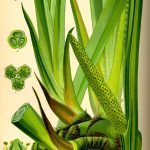 Acorus calamus (also called sweet flag or calamus, among many common names) is a species of flowering plant, a tall wetland monocot of the Acoraceae family, in the genus Acorus. Sweet flag is a herbaceous perennial, 30–100 cm (12–39 in) tall. In habit it resembles the iris, and has given its name to the flag iris, I. pseudacorus. Read more
Acorus calamus (also called sweet flag or calamus, among many common names) is a species of flowering plant, a tall wetland monocot of the Acoraceae family, in the genus Acorus. Sweet flag is a herbaceous perennial, 30–100 cm (12–39 in) tall. In habit it resembles the iris, and has given its name to the flag iris, I. pseudacorus. Read more
Agathis australis
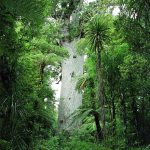 Agathis australis, commonly known by its Maori name kauri, is a coniferous tree of Araucariaceae in the genus Agathis, found north of 38°S in the northern districts of New Zealand’s North Island. Kauri forests are among the most ancient in the world. The tree has smooth bark and small narrow leaves. Read more
Agathis australis, commonly known by its Maori name kauri, is a coniferous tree of Araucariaceae in the genus Agathis, found north of 38°S in the northern districts of New Zealand’s North Island. Kauri forests are among the most ancient in the world. The tree has smooth bark and small narrow leaves. Read more
American cedar
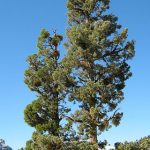 American cedar, California frankincense cedar or California river cedar (Calocedrus decurrens) is one of the four species of the genus Frankincense cedar (Calocedrus). Characteristic of this type are the elongated, annual cones made up of six scales, the Thujen-like branches and the orange, longitudinally cracked bark of older trees. Read more
American cedar, California frankincense cedar or California river cedar (Calocedrus decurrens) is one of the four species of the genus Frankincense cedar (Calocedrus). Characteristic of this type are the elongated, annual cones made up of six scales, the Thujen-like branches and the orange, longitudinally cracked bark of older trees. Read more
Artemisia absinthium
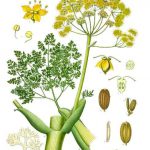 Artemisia absinthium L., common wormwood or wormwood (English: Wormwood, Greek Αρτεμισία το αψίνθιο) has its natural occurrence in the temperate regions of Eurasia and in North Africa. Although the plant is often found in Europe and it is one of the medicinal herbs cultivated in the monastery gardens for centuries, due to its rather unassuming appearance, it is not recognized by many forest walkers.
Artemisia absinthium L., common wormwood or wormwood (English: Wormwood, Greek Αρτεμισία το αψίνθιο) has its natural occurrence in the temperate regions of Eurasia and in North Africa. Although the plant is often found in Europe and it is one of the medicinal herbs cultivated in the monastery gardens for centuries, due to its rather unassuming appearance, it is not recognized by many forest walkers.
Read more
Aralia racemosa
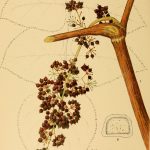 Aralia racemosa, with common names American spikenard, small spikenard, Indian root, spice berry, spignet, life-of-man, petty morel, is an ornamental plant in the family Araliaceae native to the United States and Canada. It is a herbaceous plant, about 1 to 2 m (3 ft 3 in to 6 ft 7 in) tall, which grows in shady areas. Its native range includes most of the eastern United States. The first publication of Aralia racemosa was made in 1753 by Carl von Linné. (from Wikipedia)
Aralia racemosa, with common names American spikenard, small spikenard, Indian root, spice berry, spignet, life-of-man, petty morel, is an ornamental plant in the family Araliaceae native to the United States and Canada. It is a herbaceous plant, about 1 to 2 m (3 ft 3 in to 6 ft 7 in) tall, which grows in shady areas. Its native range includes most of the eastern United States. The first publication of Aralia racemosa was made in 1753 by Carl von Linné. (from Wikipedia)
Artemisia Vulgaris
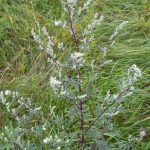 Artemisia Vulgaris (commonly known as mugwort, felon herb, chrysanthemum weed, wild wormwood, Old Uncle Henry, sailor’s tobacco, naughty man, old man or St. John’s plant ) is a tall herbaceous perennial plant growing 1–2 m tall, with a woody root, native to temperate Europe, Asia, northern Africa and Alaska.Read more
Artemisia Vulgaris (commonly known as mugwort, felon herb, chrysanthemum weed, wild wormwood, Old Uncle Henry, sailor’s tobacco, naughty man, old man or St. John’s plant ) is a tall herbaceous perennial plant growing 1–2 m tall, with a woody root, native to temperate Europe, Asia, northern Africa and Alaska.Read more
Amber (Baltic Succinite)
 Amber (from Central Low German: Börnesteen, i.e. "Brennstein") is a fossil resin that comes from an extinct plant species that has not yet been finally identified. By far the most common type of amber is succinite, of which there are estimated to be more than 640,000 t in the Baltic States.
Amber (from Central Low German: Börnesteen, i.e. "Brennstein") is a fossil resin that comes from an extinct plant species that has not yet been finally identified. By far the most common type of amber is succinite, of which there are estimated to be more than 640,000 t in the Baltic States.
Read more
Birch
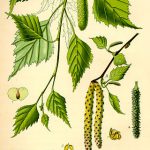 Birch is a thin-leaved, generally small to medium-sized deciduous hardwood tree of the genus Betula in the family Betulaceae, which also includes alders, hazels, and hornbeams, and is closely related to the beech/oak family, Fagaceae. They are typically rather short-lived pioneer species widespread in the Northern Hemisphere, particularly in northern temperate and boreal climates.Read more
Birch is a thin-leaved, generally small to medium-sized deciduous hardwood tree of the genus Betula in the family Betulaceae, which also includes alders, hazels, and hornbeams, and is closely related to the beech/oak family, Fagaceae. They are typically rather short-lived pioneer species widespread in the Northern Hemisphere, particularly in northern temperate and boreal climates.Read more
Boswellia sacra
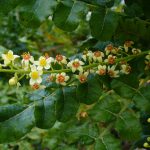 Boswellia sacra (commonly known as frankincense or olibanum-tree) is a tree in the Burseraceae family, from which frankincense, a resinous dried sap, is harvested. It is native to the Arabian Peninsula (Oman, Yemen) , and northeastern Africa (Somalia). Read more
Boswellia sacra (commonly known as frankincense or olibanum-tree) is a tree in the Burseraceae family, from which frankincense, a resinous dried sap, is harvested. It is native to the Arabian Peninsula (Oman, Yemen) , and northeastern Africa (Somalia). Read more
Cedrus deodara
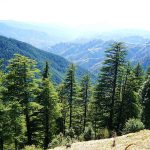 Cedrus deodara (deodar cedar, Himalayan cedar) is a species of cedarnative to the western Himalayas in eastern Afghanistan, northern Pakistan and northern India, in Tibet and western Nepal, occurring at 1,500–3,200 m (4,921–10,499 ft) altitude.Read more
Cedrus deodara (deodar cedar, Himalayan cedar) is a species of cedarnative to the western Himalayas in eastern Afghanistan, northern Pakistan and northern India, in Tibet and western Nepal, occurring at 1,500–3,200 m (4,921–10,499 ft) altitude.Read more
Cedrus libani (Lebanon cedar)
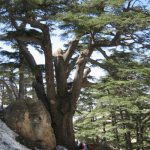 Lebanon cedar (Cedrus libani) grows mainly along the Mediterranean coast of south and southwestern Anatolia, in Lebanon, the emblem of which it is, and on the heights of Jebel Aansariye in Syria. It is an evergreen tree that can grow to heights of 30 to 50 meters and can live for over 1,000 years. The largest and oldest cedar in Germany (planted around 1720, trunk circumference 5.20 meters) is in Weinheim.
Lebanon cedar (Cedrus libani) grows mainly along the Mediterranean coast of south and southwestern Anatolia, in Lebanon, the emblem of which it is, and on the heights of Jebel Aansariye in Syria. It is an evergreen tree that can grow to heights of 30 to 50 meters and can live for over 1,000 years. The largest and oldest cedar in Germany (planted around 1720, trunk circumference 5.20 meters) is in Weinheim.
Cupressus sempervirens (cypress)
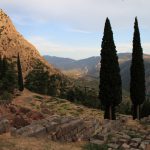 Cupressus sempervirens, the Mediterranean cypress (also known as Italian cypress, Tuscan cypress, graveyard cypress, or pencil pine), is a species cypress native to the eastern Mediterranean region, in Libya, Albania, Croatia, Greece, Turkey, Cyprus, Egypt, Syria, Lebanon, Israel, Malta, Italy, Jordan and Iran.
Cupressus sempervirens, the Mediterranean cypress (also known as Italian cypress, Tuscan cypress, graveyard cypress, or pencil pine), is a species cypress native to the eastern Mediterranean region, in Libya, Albania, Croatia, Greece, Turkey, Cyprus, Egypt, Syria, Lebanon, Israel, Malta, Italy, Jordan and Iran.

 Deutsch
Deutsch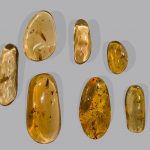 Copal is a name given to tree resin from the copal tree Protium copal (Burseraceae) that is particularly identified with the aromatic resins used by the cultures of pre-Columbian Mesoamerica as ceremonially burned incense and other purposes.
Copal is a name given to tree resin from the copal tree Protium copal (Burseraceae) that is particularly identified with the aromatic resins used by the cultures of pre-Columbian Mesoamerica as ceremonially burned incense and other purposes.